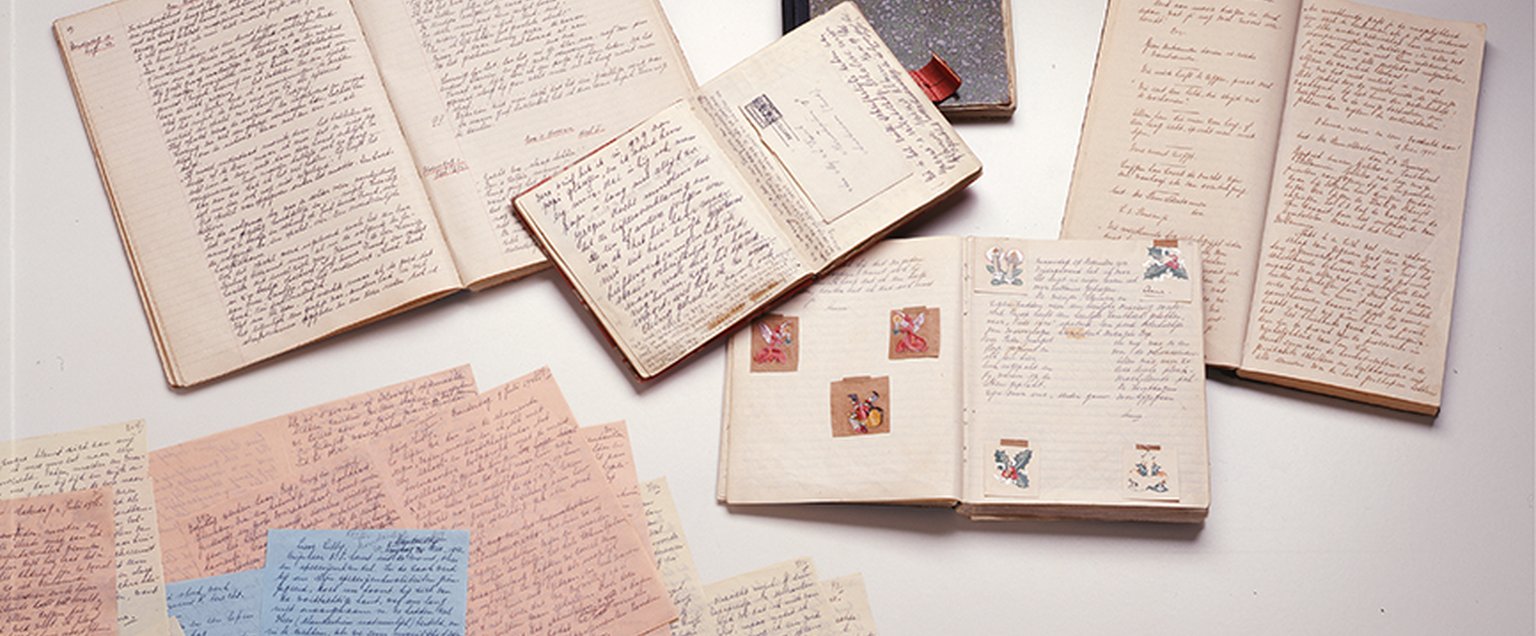Later, Otto Frank would write about the publication of The Secret Annex: ‘How proud Anne would have been if she had lived to see this.’
75th anniversary of the first edition of Anne Frank’s diary

June 23, 2022 — Saturday 25 June 2022 marks the 75th anniversary of the publication of Anne Frank’s diary, Het Achterhuis, or The Secret Annex, with Contact Publishers in 1947. Otto Frank, the only member of the Frank family to survive the war, posthumously fulfilled his daughter’s wish to publish a novel about her time in hiding based on her diaries.
‘You’ve known for a long time that my greatest wish is to be a journalist, and later on, a famous writer. We’ll have to wait and see if these grand illusions (or delusions!) will ever come true, but up to now I’ve had no lack of topics. In any case, after the war I’d like to publish a book called The Secret Annex. It remains to be seen whether I’ll succeed, but my diary can serve as the basis.’
‘This is the legacy of your daughter Anne,’ helper Miep Gies told Otto Frank on 18 July 1945, when she handed him Anne’s diary documents. Otto had just heard that his daughters Margot and Anne had died of spotted typhus in Bergen-Belsen. At first, Otto could not bear to read Anne’s diaries, but one month later, he changed his mind and found himself unable to put them down. Otto decided to copy excerpts for the family in Basel and started working on a translation into German.
‘A very different Anne’
Reading the diary, Otto realised that he had not known his daughter as well as he thought he did. ‘The Anne that appeared before me was very different from the daughter I had lost. I had had no idea of the depth of her thoughts and feelings.’ Otto’s excerpts were read not just by his family but by friends as well. They felt that Anne’s texts were ‘an important human document’ and that Otto should not keep the texts to himself. It took some time before Otto agreed with them.
‘A Child’s Voice’
His acquaintances Jan and Annie Romein, both historians, helped Otto Frank find a publisher. Jan Romein had read the diary and written a short piece titled ‘A Child’s Voice’ about it for Het Parool, a Dutch newspaper. He wrote, among other things: ‘When I finished the book, it was night, and I was amazed that the lights were still on, that there was bread and tea, that I did not hear the roaring of aeroplanes or the thumping of soldiers’ boots in the street - I had been captivated and taken back to the unreal world that lies almost a year behind us.’
Anne’s wish comes true
Jan Romein’s column piqued the interest of Contact, an Amsterdam publishing house. Otto made a compilation of Anne’s diary, her rewritten diary texts, and some short stories. The book was published in 1947, just over five years after Anne’s thirteenth birthday, when she received her first, red-checked diary. She had come up with the Dutch title of the book herself: Het Achterhuis (The Secret Annex). The Dutch edition received positive reviews, such as ’a war document of striking density,’ and ‘Parents and educators are strongly advised to read this diary.’ After the first edition (3,036 copies), the second edition (6,830) followed in December 1947 and the third edition (10,500 copies) in February 1948.
Learning from the past
The success of The Secret Annex in the Netherlands encouraged Otto Frank to look for publishing opportunities abroad. After a French edition (1950), followed a German one (also in 1950). The English translation of the diary was published two years later. Over the years, many more were added. Anne Frank’s diary is now available in over 70 languages.
‘Until his death in 1980, Otto Frank received reactions from readers worldwide, who had been moved by the book. He wrote about these letters that “(...) despite all the differences (...) there is usually a desire to learn from the past and to work towards a better understanding among people.” Otto was tireless in his efforts to make the world a better place. His efforts are part of the reason why Anne’s words still reverberate around the world.’